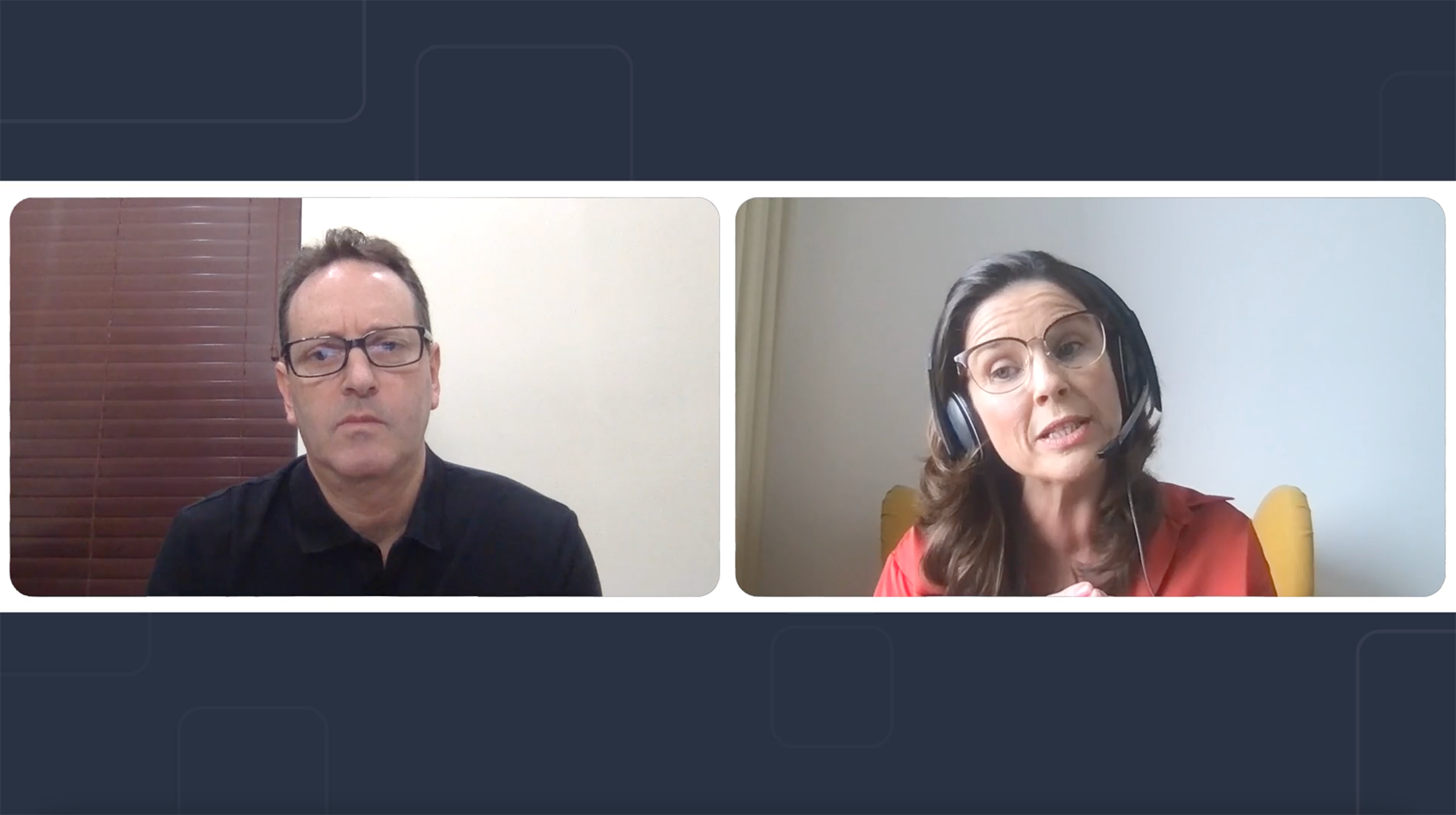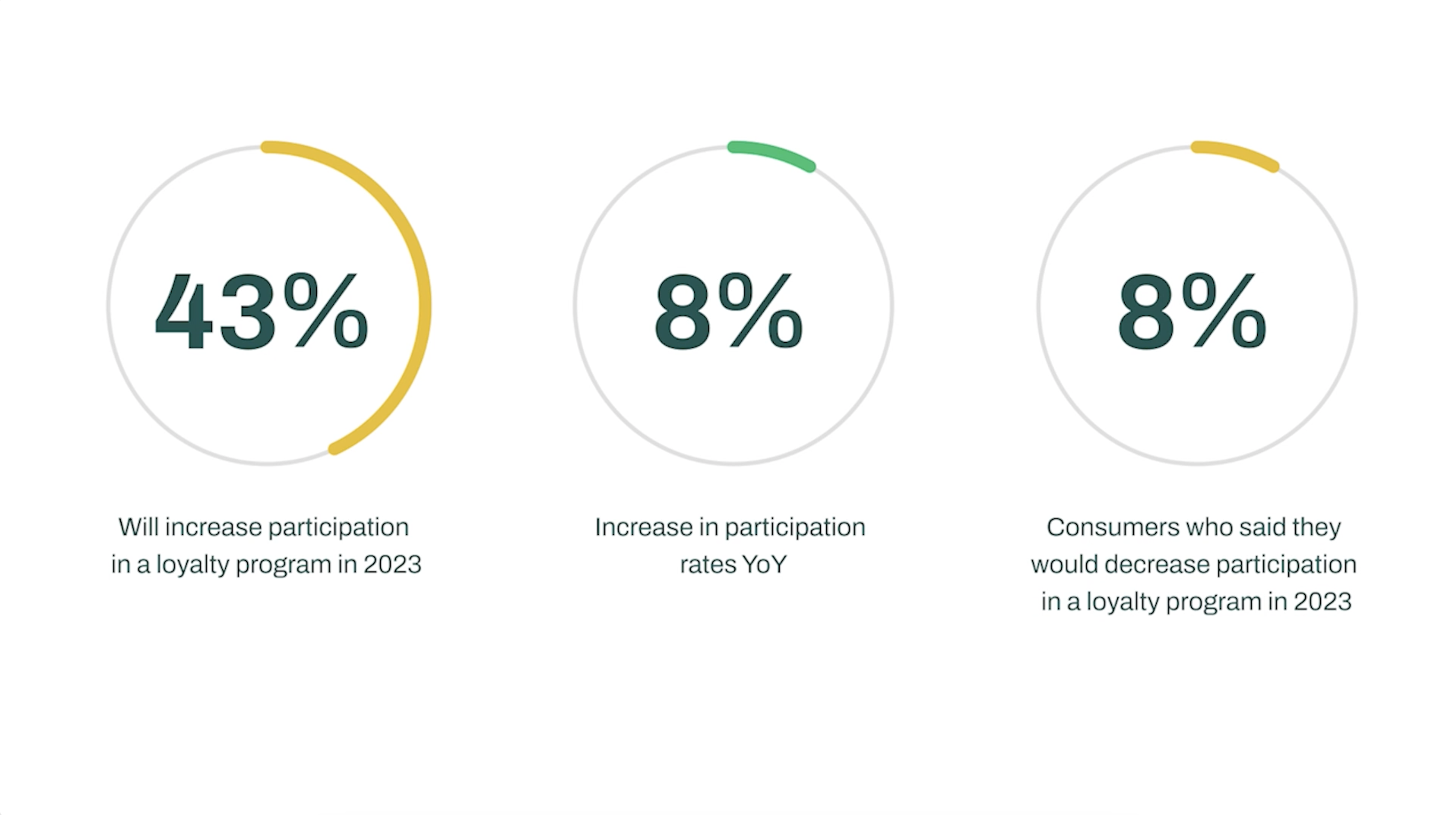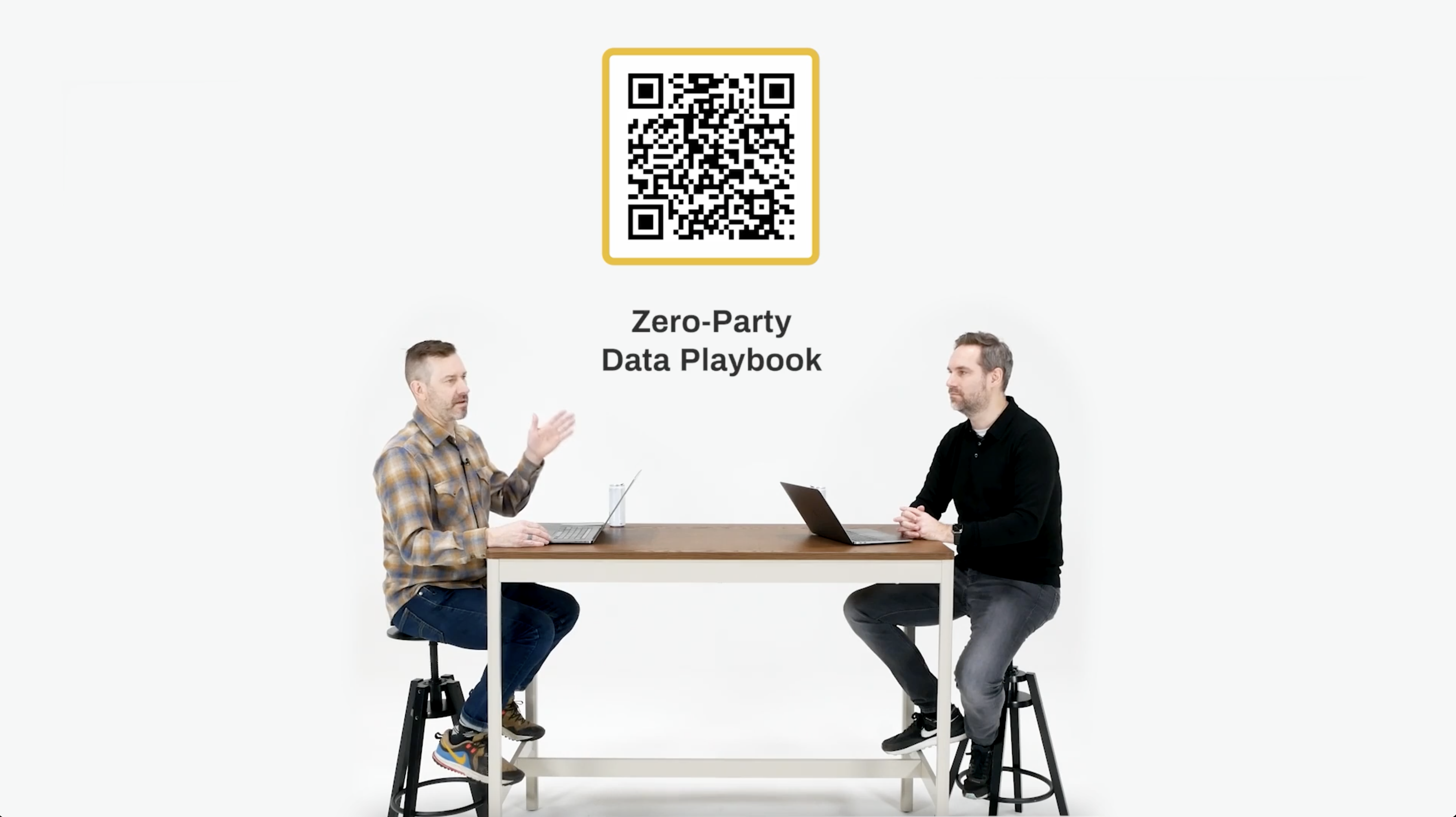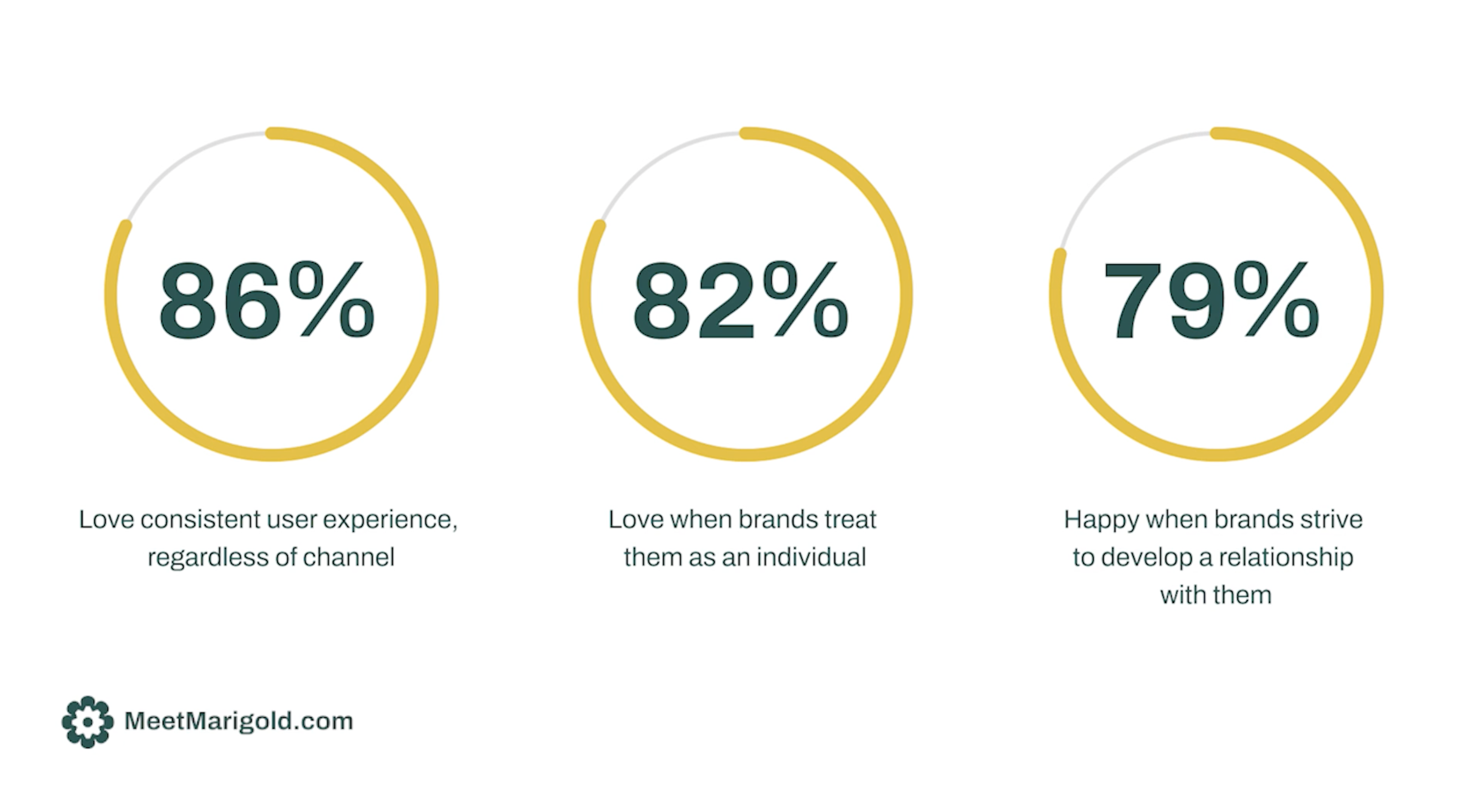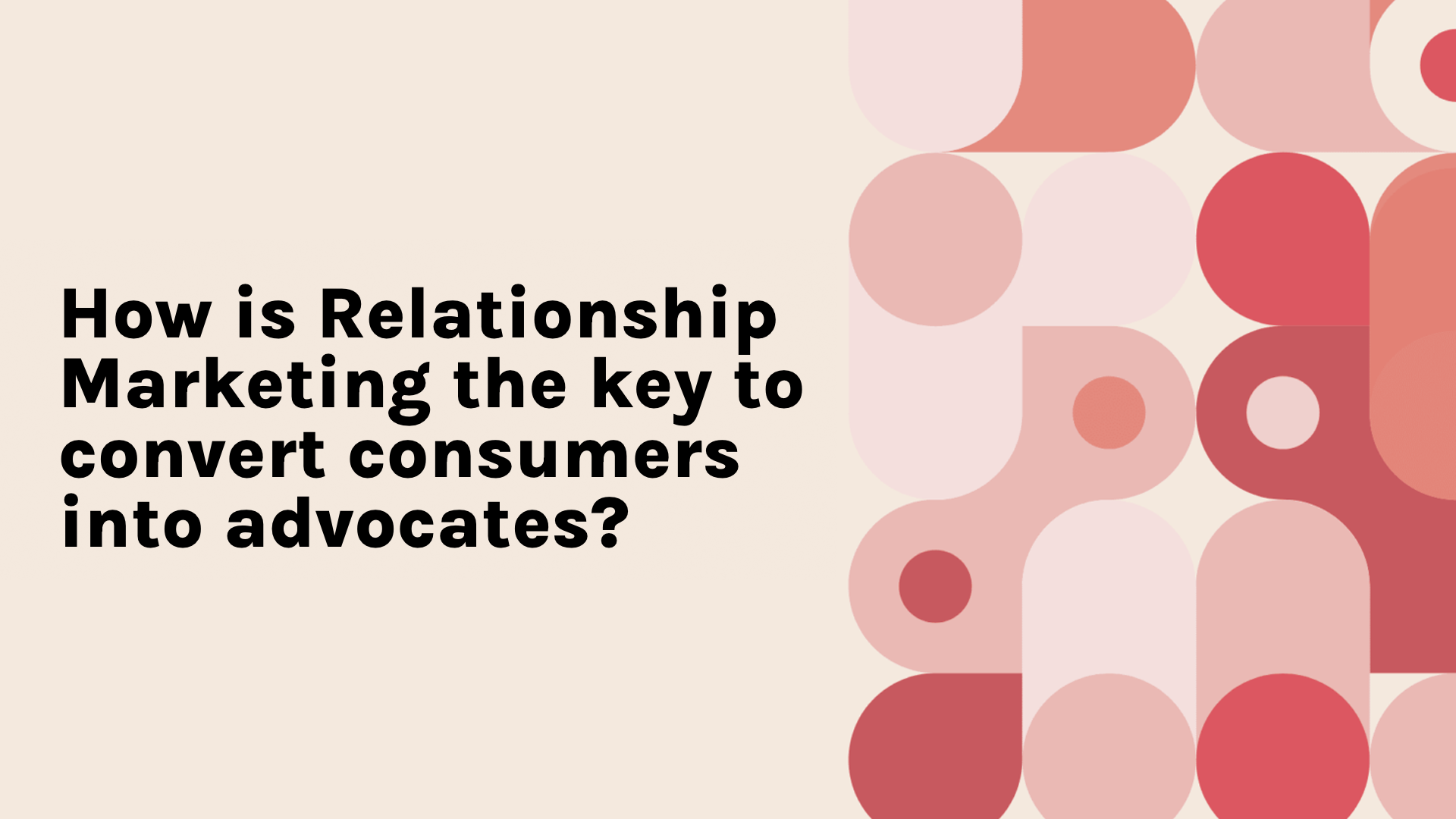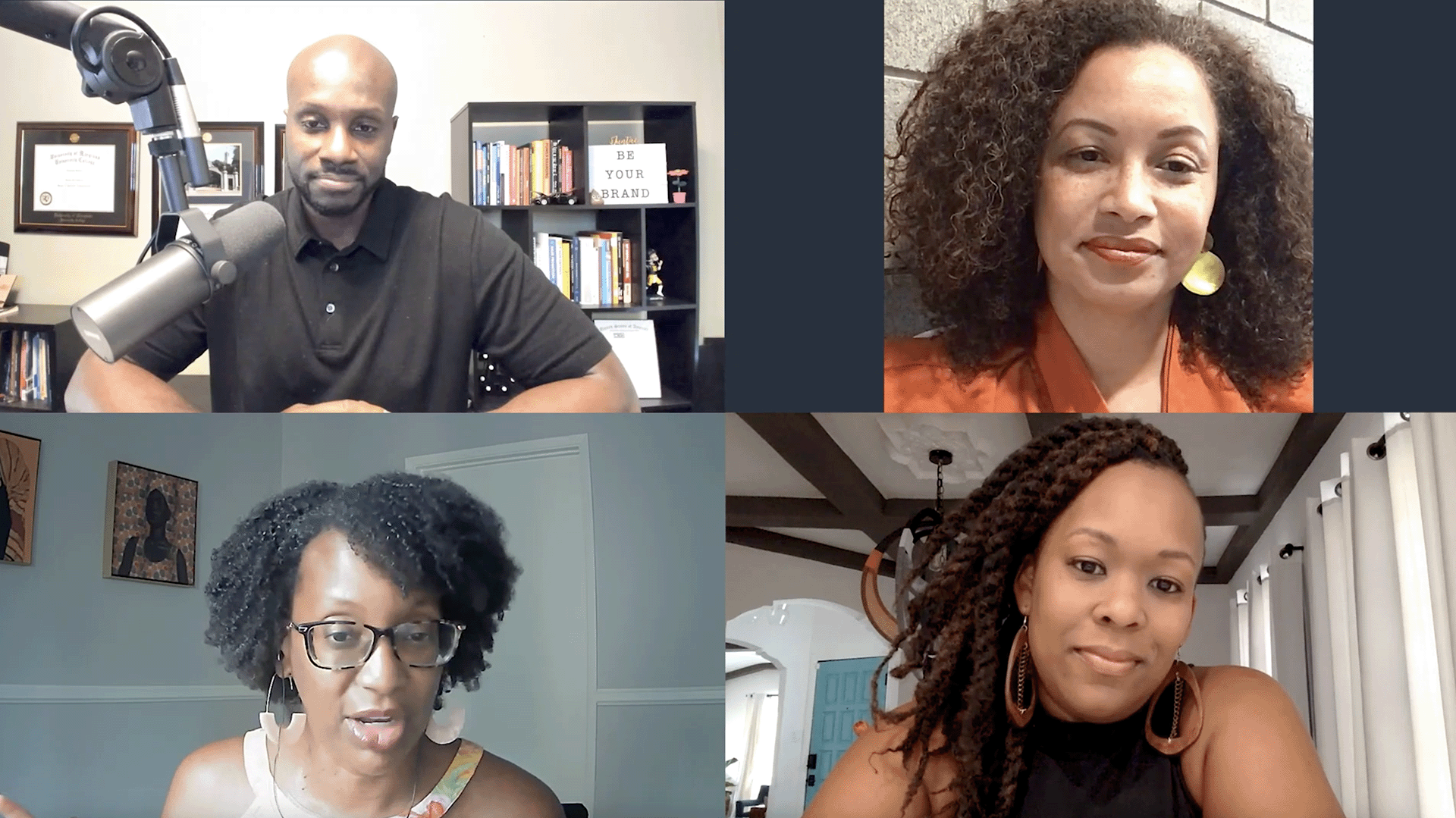Let's Talk Loyalty - Insights From Some of the World's Leading Loyalty Marketers
- 0.5
- 1
- 1.25
- 1.5
- 1.75
- 2
Jon Siegal: Paula, it's great to be speaking with you.
Paula Thomas: Thank you so much, Jon.
Jon Siegal: I just wanted to say, someday I want to be known as the Oprah of something. I don't know what, but I want to be known as the Oprah of something, it's on my bucket list.
Paula Thomas: Oh.
Jon Siegal: Can you share how you earned the designation the Oprah of Loyalty?
Paula Thomas: Thank you, thank you, Jon. Absolutely. Honestly, it's my favorite name ever, so totally acknowledge that. In terms of how it came to be, I mean, I've been in loyalty a long time, Jon, I know you have as well, but I suppose it's one thing to be a consultant, and really, I suppose, be running programs and understanding them. But I guess once I started podcasting, that gave me just this incredible opportunity to ask all those really complicated questions about loyalty programs from really big brands. So I created Let's Talk Loyalty, we've recorded nearly 300 episodes, and in fairness, it was my husband who gave me the name, so I will concede and admit that little piece. But at the same time, it makes me feel like I'm actually being of service to the industry, which was the whole point of the show.
Jon Siegal: Outstanding. Well, you're the one who's usually doing the interviewing. Today, we get to interview you, and our goal really is to try and understand some of the insights that you've gathered from all of those interviews and talking to all of those leaders. So I have a number of questions, and let's just jump right in. One of the things that I find fascinating is over the last number of years, I've seen how loyalty has moved from this marketing departmental decision to it's a C- level decision, and it's been discussed in the boardroom. We have clients who are public companies, who they report on their loyalty metrics as part of their earnings announcements. So it's really moved from whatever it was to such a strategic part of the business, in being a key part of digital transformations. And so I wanted to just have you share, and maybe help us understand from the interviews you've done, what's been driving the importance of loyalty and driving it into the boardroom?
Paula Thomas: Yeah, it's a great question, Jon. I would say, first of all, there's a clarity of thinking around the fact that customers are the only source of revenue that you have. And I think it's particularly important as we go through global issues, whether it's the massive economic recession back in 2008, incidentally exactly when I got into loyalty, or the recent pandemic. So I'm sure your clients, Jon, have really experienced this even more truth truism, which is that your most valuable customers will always be the ones that will come back soonest, they will still be the ones that spend more. So to me, it's absolutely incredible. I suppose, historically, it was hard to prove, and I know that that's the challenge with all of marketing. But at the end of the day, unless you really love your customers, particularly those top tier customers, you absolutely can't build a sustainable business. And I also think actually the academic world is helping, Jon. So I don't know if you've ever talked to any of the guys. There's, for example, one guest I had on the show, Prof. Pete Fader from Wharton University, and he talked about a whole framework, which he calls Customer- Based Corporate Valuation. And it always seems now actually, Jon, that there's external pressure as well, particularly with big enterprise customers or public customers. So investors are increasingly asking, " How well are you taking care of your customers?" Because they know the acquisition costs. And Jon, I don't need to tell you, digital marketing is becoming much more expensive, cookies are going to disappear at some point. So why would we not focus our resources on the people who've already said they like what we do? So for me, it's absolutely a C- suite conversation, and I'm thrilled to see that progress.
Jon Siegal: Do you have any examples of some of the interviews you've done where someone's shared with you a story about the board level discussion, or the challenges they've perhaps had in their own loyalty journey that you think would be interesting for our listeners to hear?
Paula Thomas: Well, I think they all have the same challenges, Jon. For me, I guess what we face is this difficulty between what we would call correlation and causation. And this comes up in some shape or form, I guess, with almost everyone. So I guess the ones that come to mind are brands that have managed to perhaps isolate something like a particular segment of customers, and really prove that the ones that are engaged with the loyalty program are so much more profitable than the ones that aren't. So absolutely, it's one, for example, I just interviewed Air Asia recently, and what they did was move from having an airline program into actually a super app, and that's an extraordinary evolution. So they have a chief loyalty officer. So for brands to start to have those conversations. And I guess the other thing that came through as well, Jon, is the valuations for loyalty programs, particularly in the airline sector, coming through COVID. So for the first time, it was almost seen that in some cases the loyalty programs were more valuable than the airlines that actually created them. So I think...
Jon Siegal: It became a source of capital in a number of situations too, during the pandemic, the loyalty value of it.
Paula Thomas: It does. And what loyalty programs, particularly for airlines, do is they provide that stable recurring source of revenue. It's actually, I think, a awful lot easier to sell air miles than it is to actually say sell airline seats. So yeah, absolutely. I think that's why it has come on the radar increasingly at more senior level. So yeah, super exciting times.
Jon Siegal: Absolutely. The other big shift I've seen over the last few years, and I think it may have been Forrester who started using the term emotional loyalty a few years back, but now you hear it all the time, it's very common. You go to loyalty marketing events and people are talking about how they can help you measure emotional loyalty. What is driving that shift from what have been more transactional programs? And from your perspective, from the interviews you've done, what do people actually mean when they talk about emotional loyalty?
Paula Thomas: Yeah, they mean very different things, Jon, and I will say that most of them are still struggling to actually deliver on that. So I think it's very clear that they understand, from a pure human being perspective, that we understand the transactional loyalty. And if you've ever looked at the history, I certainly find it fascinating. The loyalty industry goes back to the late 1800s with stamp card programs, and they were extremely successful. And they did start with something very logical that brands could buy into. So transactional loyalty has always made logical sense. But then, as marketing people, we know that we make decisions from, I suppose, an emotional point of view. So our programs have to reflect that. So I think we've seen things like gamification, which obviously you guys do exceptionally well. So that definitely drives a new, I suppose, experience for lots of members to actually just fundamentally enjoy connecting and engaging with the loyalty program. But two examples, I suppose, come to mind when you mention specifically emotional loyalty. One is actually just a campaign that McDonald's did, for example, even before they launched the new McDonald's Rewards program. And that was a very simple giveaway. I remember writing an article about it, where they gave away 5, 000 gift cards where you could get a free coffee and pay it forward. And I thought that that was an exceptional way to actually just have people having conversations about McDonald's coffee in a way that felt very generous, and clearly an emotional connection. So that's one I always love to talk about. And I guess the other one, Jon, is we have Etihad Airways, I'm sure very well here in this part of the world, and Etihad really do, I suppose, see the opportunity to distinguish themselves. They're not the biggest carrier in this part of the world, but particularly through COVID, I think they've done an exceptional job, first of all, doing things like, for example, reaching out to their members and saying, " Tell us about somebody who made your life easier during these extremely difficult times." So of course, we all think about our family and our friends, and all of the wonderful things that people stepped up to do, whether it's healthcare workers. So people were able to submit those stories. And then, of course, what Etihad gets to do is review all of those, reward them, connect them, share them. And honestly, I've seen people actually nearly move to tears at loyalty conferences when they see some of the work that's been done. So definitely not easy to do, I know it's a long answer, but I do think it's extremely important and, yeah.
Jon Siegal: Speaking about moving to tears, I'll tell you a story that I thought was interesting. People think about emotional loyalty, the goal of building these emotional connections, but I also think programs that it's just part of the experience, foster emotion and build advocacy are other good examples. And so the brand Vans, when they launched Vans Family, which is their loyalty program, one of the first things they did is they asked their customers to submit a photo and tell the story of their first pair of Vans shoes.
Paula Thomas: Oh.
Jon Siegal: And I went through and read the various submissions. And get a box of Kleenex for this, let me tell you. I mean, people had pictures of them talking about their first day in second grade, and they'd show the picture, and meeting new people, and how the Vans shoes that they had bought was so important to that whole kindergarten or second grade or whatever experience. Same thing with teenagers and adults. And so people of all ages submitted these stories, they had over 40,000 of them. And they were, in many cases, very passionate, emotional stories that not only did the brand get people to reflect on those experiences and share, it also turned into content that they shared, or had the ability to share out on their social platforms as well. So really, that's another good example that I enjoyed seeing happen.
Paula Thomas: And you've reminded of me as well, Jon, and it's probably a separate point, but to me, one thing I'm really hearing coming through is the role of content. And I think, again, social media content is very well established and I think everybody's focused on that, but I think the idea of creating perhaps long- form content, I've interviewed brands that do have podcasts, they have video content, they have articles. And I'm talking huge brands in the UK, for example, in the pharmacy sector, like Boots or Adore Beauty down in Australia. And what I find that is achieving, again, is that emotional connection. Because if I've listened to a beauty brand and they're helping me understand my skincare issues or what protocols I need to be thinking about if I'm trying to get pregnant, or who knows, the depth of topics that that retailer is there to serve. And I really think actually content is extremely important, clearly you guys do as well or we wouldn't be doing this. But I think loyalty programs are moving in that direction, and content is a great way to achieve emotional loyalty as well.
Jon Siegal: Absolutely, absolutely. I want to go back to something you talked about in the beginning because you touched on the pandemic a little bit. And I know you interviewed folks about their experiences during the pandemic.
Paula Thomas: Yeah.
Jon Siegal: What insights did you learn or did people share about the pandemic experience?
Paula Thomas: So I think, first and foremost, it had that, I suppose, that counter- cyclical piece that I referenced earlier, Jon, in that the customers in a pandemic that you can most rely on, that will come back quickest, and will again spend the most, even through a pandemic, are the same top 20% of your members. And one thing that I really found very reassuring actually through the whole, I suppose, all of the 300 episodes is the Pareto principle that we learn about in business school, in every situation, I've asked the question about it, people have absolutely said that that framework, that 80% of your revenue will come from 20% of your customers, that's absolutely true. So through the pandemic, that was something that became even more important. And to me, I see a lot of brave brands who realize, " Okay, the market is probably quieter from a communications perspective," and if you're brave and have the budget, I think the pandemic created some big opportunities for some big brands. So to me, that was the first and biggest, I suppose, realization was that we really have a role to play when times are tough. And I guess the second thing as we come through, Jon, I think there's a lot of reevaluation that took place through the pandemic. So I'm sure you've heard this with your clients as well, where I think, maybe during lockdown or whatever, we all reflected a lot more deeply in terms of, " How am I living my life? Do I want to commute to work? Do I want to buy an ordinary pair of trainers or do I want to have a Vans in my life?" Those kind of things really, I think, are forcing brands to stand for something. And I know Vans absolutely does exactly that. And lots of brands have said, " We might have had a CSR initiative in the past, we might have talked about the environment in the past," but actually people will see through any greenwashing or anything that feels superficial. So to me, the post- pandemic opportunity is really thinking through what do you want to stand for, what kind of business do you want to be, because customers are making decisions all of the time. And again, particularly coming out of the pandemic, please God, it is a case where I might have started shopping online, so now am I going to go back to my old grocery store? Am I going to stick with the new guys? So I think it's a big opportunity, again, but needs a lot more thinking really, to be honest.
Jon Siegal: Can you connect this idea though of standing for something to loyalty and the loyalty program? I'm interested in how those two ideas work together.
Paula Thomas: Well, I'll tell you actually, and this is a question, for example, that I ask all of my guests, Jon, for example, about a favorite loyalty program. And one that I interviewed recently probably hadn't originally, I suppose, set itself up as a loyalty program. But actually it is in its very essence, and it's an app, and it's a health app, and it's called Sweatcoin. Have you actually heard of it by any chance? Heard of Sweatcoin?
Jon Siegal: I have not.
Paula Thomas: Okay. So Sweatcoin was the number one app downloaded globally in the health and wellness category in the first half of 2022. And essentially...
Jon Siegal: Now you're making me feel bad that I don't know about it because it was the number one downloaded app and I don't know about it, but keep going.
Paula Thomas: Me neither. This is four weeks ago, I've just copped on, Jon, so I'm a bit behind myself. But I suppose the whole point is it came from a founder who realized that people want to get fit, but actually we're fundamentally lazy, we put it off and we have all of these excuses. So what Sweatcoin decided to do was leverage loyalty mechanics to change behavior, to actually put a currency in place so that you are immediately rewarded for going out for that walk, for example. And I can tell you, now, it's short- lived, it's early days, but since I downloaded it, I have been going out for my walk every morning. I'm tracking it on Sweatcoin, much as I might have done in the past with Fitbit, but now I have a rewards currency. So when you ask the question about, " What we stand for?" that's something that stands for the health of the actual individual, which to me is utter integrity, the interests of the business, which of course will have to come through, it has to be a profitable business, which they have done. So they absolutely seem to have nailed it. But also, I suppose, their business model is around, it's a media model, so it's the attention of those 120 million people who've downloaded the app. Now, I have to go in and claim a reward, so let me scroll through all of the brands that are in there. So yeah, I think that's a great example of something that stands for something. We all know the Patagonia story I'm sure as well, where, I don't know how they legally did it, but apparently they've signed the business over to Mother Earth. So there are no shareholders.
Jon Siegal: I think we all own it now. Aren't we all owners in the business?
Paula Thomas: Where's the dividends? I'm super excited.
Jon Siegal: I'm going to go get my free Patagonia, I guess, right?
Paula Thomas: Totally. But you can see the role of purpose, I guess. And again, can't be done superficially. It's been done I think in many ways over the years, but I think more brands are putting a lot more thought into it. So yeah, super interesting space.
Jon Siegal: That's very interesting. I would just say, just going back to the whole pandemic and then we can maybe close that topic out. What we saw was the brands that had the digital connections tended to do very well or survive through, and then there were brands whose digital game was just, it wasn't an A game, it was maybe a C or D game. And some of them aren't around anymore.
Paula Thomas: Totally.
Jon Siegal: They didn't make it because their customers couldn't go into a place to go interact with them, and they didn't have the digital connections, or the strong bond with a group of customers who would fight through whatever adversity it took to do business with them. So what we saw then, that spurred a whole series of initiatives for people to say, " Even if we were at the top of our game, we need to keep pushing and innovating in anticipation of perhaps something that could happen in the future," or just in generally to... It's a competitive advantage to have those strong digital connections.
Paula Thomas: You're absolutely right, Jon. And I think what a lot of brands did realize is they might only fly with me or shop with me or whatever. So if you think about the frequency of how often you engage with your customers, from a transactional perspective, that's a moment in time, maybe once, twice, three times a year. But you're absolutely right. If you've got a digital connection, then that's an exceptional opportunity to connect when they or you feel it's appropriate. So it just transforms it, you're suddenly available 24/ 7 if appropriate.
Jon Siegal: Yes, absolutely. So okay, putting the pandemic in the rear view mirror and moving on.
Paula Thomas: Totally.
Jon Siegal: So you've had these 300 plus interviews. Based upon all those discussions and conversations, what would you say is some of the best advice you would have for marketers given what you learned?
Paula Thomas: Yeah, it's a great question, Jon. So for me, probably the biggest insight that I've learned is there seems to be a massive discrepancy between how we as loyalty marketers feel we're taking care of our members, and how those members feel that our brands are being loyal to them. And it's literally polar opposites. And to me, the single biggest insight and advice for marketers is, step one, is to be loyal to your customers. You cannot expect them to suddenly start behaving in more profitable ways just because they've joined a program. So I think it's a huge flip, it's come through in lots of research that we've talked about, I'm sure you guys are seeing it as well, but the biggest piece of advice is it is your responsibility to be loyal to your customers, first and foremost. It's like any relationship, you can't sit back and wait and hope that somebody else is going to be nice to you, or feel something in a particular way. We actually have to send out that energy and I really believe that members feel it. And I think what most surprised me actually in all of the episodes that I've done is somebody whose name you mightn't know, but he is super famous because of his work and it's the founder of Net Promoter Score, Fred Reichheld. Now, Fred Reichheld will first of all say Net Promoter Score is not perfect, but it is probably the best possible framework in terms of measuring if somebody will advocate for your brand. And what I loved about interviewing him was he really talked about love, and he used that word throughout our conversation. And that's not something you hear in most business meetings, is how can we be more loving to our customers? How can we take care of them more? And this is a fellow of Bain& Company, for example. He's got masters in economics I think, in lots of incredible academic qualifications. And if he's, I suppose, talking about the simplicity of the human emotion of love, then I think every marketer should be thinking from that perspective as well.
Jon Siegal: That's great insight. We've used the term customer obsessed.
Paula Thomas: Beautiful, yeah.
Jon Siegal: That you need to be obsessed with your customers and their needs and wants. And that's just, I guess, another way of saying being loyal to your customers.
Paula Thomas: Totally.
Jon Siegal: And it's easy to say, but it's not easy to do.
Paula Thomas: And that's exactly why I say people feel it. Jon, so glad you said that because I do think it's on so many mission statements and company intentions, but actually it's the delivery of that, that's what the customer actually feels. And unless it comes through at the moment of truth, the point of sale or the digital connection, then actually you're just pretending. So yeah, there's a lot that needs to be done to get it right.
Jon Siegal: Yeah, definitely. The last topic I want to explore with you, and this is, I think, every couple of weeks, I see a new story in this area, is around Web 3. 0 and Web 3. 0 and loyalty marketing. And maybe not everyone knows what Web 3. 0 is, some people associate Web 3. 0 with Bitcoin and the blockchain and all those things. Without getting into all the technical jargon, what is your take from the interviews you've had around how the various business leaders are thinking about this next evolution in application design and what it means for loyalty marketing?
Paula Thomas: Yeah, yeah, another great question. So what I would say is, again, I'm at the very early stages of my own understanding, so I'm certainly not going to attempt to define Web 3. 0, but I can tell you, they're probably the most listened to episodes on my show. So there's definitely a huge hunger. I think a lot of curiosity, a lot of concern, I guess, that it's a solution looking for a problem. So I guess what's coming through from a lot of brands is they're aware of mass market moves, like Starbucks, for example, have recently obviously launched NFTs. So there is huge movement that big brands are investing the resources in. So I think it's going to take time for consumers really to understand what's the point. So there's no immediate easy transferable use case that I'm seeing across loyalty programs in general. But I do know, for example, KrisFlyer, the Singapore Airlines loyalty program has built itself on blockchain, I believe it's the first to do that. There's also, I suppose, to me, things that are starting to make sense, which is that I'm beginning to understand that the main underlying trend with Web 3. 0 is this idea that things become fairer and more transferable, for example. So if I do create an image, for example, in NFT, then I do earn royalties throughout its life cycle, for example. The Metaverse, I mean, I don't know why that's any different to gaming, so I'm a little confused as the role of the metaverse, but I definitely think that there are benefits, for example, where something like a crypto- based currency can become a tradable asset. So for me, as a member of a loyalty program, instead of my currency and my rewards sitting with the brand that issued them, where actually I have limited application in terms of what I can do, at least if I can convert it into a cryptocurrency, for example, then I have full control over it. So I really like this insight that customers want control, they want to be able to use things so they can't be devalued or discontinued or any of those things that we know happen. So I think it's much more customer- centric and I think it remains to be seen exactly what that looks like when it comes to market.
Jon Siegal: Yeah, I particularly like the idea of digital rewards and being able to leverage some of the capabilities around Web 3. 0 that creates scarcity and authenticity of ownership. I know there's something there, but it's really, it's the Wild West for some time now. And I remember when Facebook just had started and it was the beginning days of social media, it was the Wild West and brands had to choose, " Where do I build my presence? Where do I invest my marketing dollars?" Because they're not unlimited. And it's the same choice as people, " Do I build a presence in this? Do I do work on Facebook's platform? Do I go to Roblox? What do I do?"
Paula Thomas: Sure.
Jon Siegal: And so I think people are doing lots of testing and learning, and I think it'll be fascinating the next however many years, seeing what people come up with and the creativity, and how they tie together the digital realm and the real world to create an experience that their customers love. So I find it fascinating, and so the fact that it was such a highly watched or listened to podcast, I think says something right there.
Paula Thomas: Absolutely, totally. Huge, huge appetite for knowledge.
Jon Siegal: Fantastic. Paula, thank you so much, really enjoyed the time together. And thank you for sharing all of these great insights from all of the interviews you've done on your podcast.
Paula Thomas: Wonderful. Great to be here, Jon. Thank you.
Jon Siegal: Take care.
DESCRIPTION
Having released almost 300 podcast episodes over the last three years, Paula Thomas is now affectionately known as the "Oprah of Loyalty." Her podcast features interviews with the loyalty marketers in the world's leading consumer brands, and it is ranked in the top 5% of podcasts worldwide. "Let's Talk Loyalty" has interviewed senior loyalty strategy experts in every sector imaginable, including airline, hotels and retailers worldwide, featuring industry leaders like American Airlines, Ikea, Panera Bread, Microsoft and Dell. Join this session to gain a deeper understanding of successful loyalty tactics.
Takeaways:
- Loyalty marketing is here to stay - Long Live Loyalty!
- From transactional to emotional - the unfolding journey
- Pandemic insights and post-pandemic opportunities
- Advice for marketers
- Web 3.0 and its role in loyalty marketing - some early insights
Today's Guests

Paula Thomas


